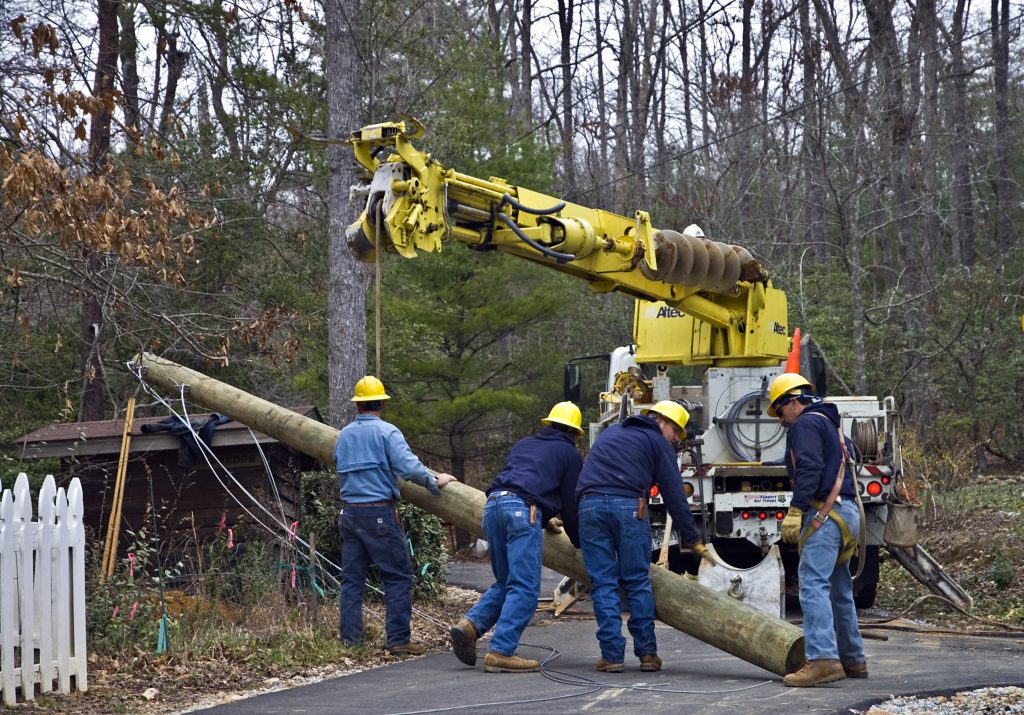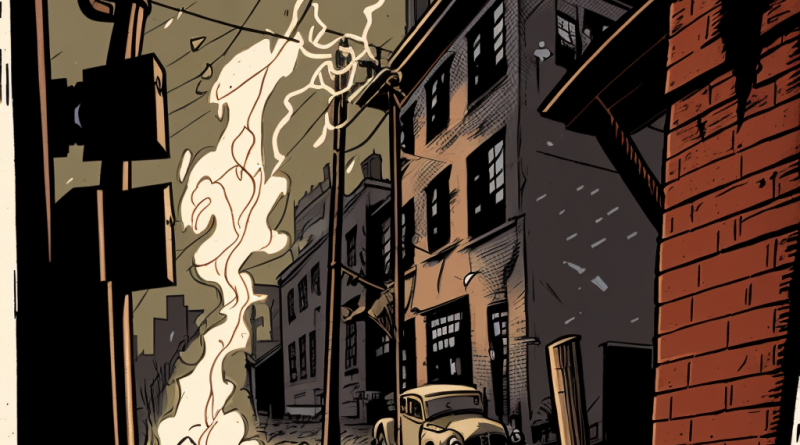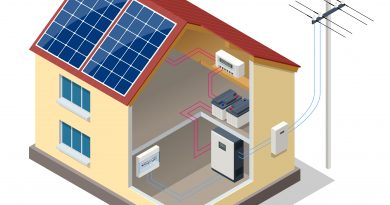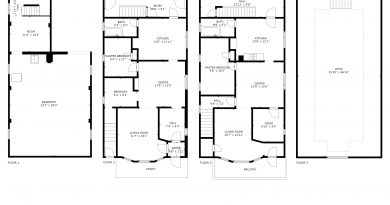Can Utilities Be Held Financially Liable For Outages?
In my last piece, I wrote about some of the issues surrounding an increasingly common weather occurrence in Michigan, which may well have left 20% of the state without power from a relatively brief, relatively un-serious storm. One idea that came up in the aftermath was responding to the question of the SAIDI reliability metric: What if public utilities had to pay customers a fixed rate per minute of power outages? The idea is that this would incentivize utilities to actually get their houses in order around reliability. This article is dedicated to Ben Dueweke, Director of Community Development at Walker-Miller Energy Services, who once told me that I never say anything constructive, I only complain!
How Do We Measure Reliability?
This idea is a relatively simple one. Figuring out what the level of liability should be, though? Not as much so. According to Bankrate, the average utility bill is $184.43 per month for gas and electric, or $2,213.16 per year. If we’re measuring costs in thousands per year and outage-minutes in hundreds of minutes per year, certainly some fraction of a dollar per average minute of outage per year might seem like the right place to start. What we do know is that the $35 bill credit is probably not cutting it.
Recall that SAIDI measures outages in terms of how many minutes the average customer has been without power. If some customers never experience power outages, that group will lower the average. We haven’t had any power outages in my neighborhood in Southwest Detroit for the past few years, which means we are lowering what will otherwise be a very high number for Southeast Michigan utilities this year.
The SAIDI average in the United States has been steadily in the low 100s (minutes per year) for the past couple of decades. That’s less than two hours of outages on average per customer per year. Customers who dealt with the latest ice storm+blizzard twofer might have “their own” SAIDI number of 5,760, if they were without power for four 24-hour days. That’s not exactly how the SAIDI number works, of course, because it’s averaged. But these storms are inevitably going to raise the average by a lot for both utilities in Southeast Michigan).

Okay, We Get It, You Love SAIDI. What Else Can We Use?
Nerd Alert! There are many metrics! If you want to control for extreme weather events to some degree, you can use SAIFI, which measures instances of outages rather than minutes. There is also CAIDI, which is the multiple of SAIDI and SAIFI, and is equivalent to the average minutes of power outage per customer per year. There are other mulitpliers that can be tied to these metrics to control for various factors. Some of these could be done with minimal Excel skill and simple Googling, while others might well require proper modeling:
- Customer density: SAIFI and SAIDI can be multiplied by the customer density of a particular area to show how areas of different urban typologies fare in severe weather.
- Time of day: Controlling for SAIFI and SAIDI by time-of-day may reveal vulnerabilities in the power grid. If data showed, for example, that most outages occurred between 3-7pm, that would suggest that local feeders are perhaps unable to handle peak demand. If outages occurred overnight, this might indicate that the utility wasn’t providing appropriate minimum power demand.
- Weather events: Multiplying SAIFI and SAIDI by the rate of occurrence (and severity) of specific weather events, such as hurricanes, snowstorms, or extreme heat, can show how these events affect outage frequency and duration.
- Infrastructure age: Multiplying SAIFI and SAIDI by the age of average unit of utility infrastructure (whatever that looks like– age of installed lines per square mile?) can provide insight into how the quality and age of infrastructure is affecting outage frequency and duration.
- Maintenance practices: Multiplying SAIFI and SAIDI by some measurement of a utility’s maintenance practices, such as the frequency of tree trimming or other preventative measures, can reveal how these practices affect outage frequency and duration. If the utility didn’t have or want to provide metrics on tree trimming, you could potentially use the percentage of local tree cover as a proxy.
And baby, we are just getting started! Whew! If anyone is mad nice at statistics (I’m nodding at my big brother over there in Delaware), you could combine multiple elements or run some sort of regression model to figure out which factors are more of a big deal than other ones. (Consulting firms and third-party evaluators often do this, but the problem is that they’re more focused on chasing shiny things like Electric Cars than they are, you know, trying to fix crumbling inner-city infrastructure).
Suffice it to say, we can analyze a lot of these things. It’s valuable especially when we start showing things like SAIDI indexed against, say, racial demographics. Whoa– you mean to tell me that there’s solid evidence suggesting that certain public utilities provide a lower quality of service to Black ratepayers? This is clearly not a shocking thing in a society such as ours. But it’s something I bring up because any additional angle of understanding is valuable in figuring out how to fix and improve systems. (Again, this section is specifically dedicated to Ben Dueweke!).
Okay, But… Then What? Reimbursements For Costs Of Outages?
Right, the reimbursement for power outages! Well, if you had 500 outage minutes per year and the utility was only netting $258.94 from your bill based on the Bankrate figures above ($2,213.16 but at a “mere” 11.7% average profit margin, which sounds impressive to a prospective investor, until you realize that utilities don’t really have growth potential because they are geographically constrained, legal monopolies), the utility would immediately start to lose money if they had to pay you more than 50 cents per minute of outage.
How much is a power outage worth?
If it’s only for a few hours, it might be the cost of an alkaline battery or a few pennies worth of IKEA tealights.
But what if it isn’t just a few hours?
In other words, at some point, we need to stop worrying about companies’ ability to make billions of dollars in profit, and we need to instead start worrying about how to be civilized humans in a civilized society with reliable infrastructure.
Any restaurant that has dealt with a power outage has probably had to throw out expensive inventory. At my job, which is notably not a restaurant, our gate was frozen shut for a bit and so the work trucks couldn’t get out. We lost probably 5-8 labor hours of productivity over this. That’s hundreds of dollars in lost productivity, but I also imagine hundreds of other businesses were in the same place. Even a hundred dollars per employee times many thousands of employees– adds up quickly. Out in the field, we struggled to do energy efficiency installations for businesses that had lost power and had no interest in dealing with their local public utility– unless it was to fix their power. (We do not fix people’s power, unfortunately, as the level of HVAC electronics is of a somewhat different scale than power distribution lines).
For individuals, what if you have to take some life-saving medicine that has to be refrigerated at a specific temperature? What if you get bronchitis and have to be admitted to the ER? Or, more nefariously, what if you die of carbon monoxide poisoning? According to an actuary who once bothered to calculate the value of that human being’s life, that’s somewhere in the millions, far more than the $258.94 per year in “maximum” liability I had thrown out there above to prevent the utility from losing profit (I’m always worried about the little guy, you know!). In other words, at some point, we need to stop worrying about companies’ ability to make billions of dollars in profit, and we need to instead start worrying about how to be civilized humans in a civilized society with reliable infrastructure.
“Stop being greedy?” Good luck with that, right?
Fortunately, short of rewriting the US tax code to disincentivize the accumulation of multi-billion dollar fortunes (which, along with the quest to continue the upward trends in the business cycle even when the business cycle is well past its prime), we do have one option available to us, and it’s figuring out how to ask for what we want, and then actually paying the utilities to get us there– under penalty of, well, things like the aforementioned bill credit for outages.

What Would It Cost The Companies To Get There?
The other day, I was out a restaurant and wondered whether every single person in the room wouldn’t gladly pay an extra few pennies on their utility bills if they had something in the way of a more ironclad guarantee of consistent power without massive outages. The question, then, is how much? Some folks would argue that the companies should do this because it’s the right thing to do. I’m here to tell you that companies don’t do the right thing out of the goodness of their hearts– they usually just do whatever the People In Charge believe is the best option for them at that time. This doesn’t mean that companies will always pursue profit– companies make plenty of bad and even financially disastrous decisions. It just means that without a bunch of stringent regulation, they’re unlikely to move on something like this.
While it’s hard to establish the cost of an outage because of how many factors go into it, as I mentioned above, we can reasonably establish about how much it will cost to fix it. There are a variety of complex equations and algorithms that utility policy nerds use to calculate what happens when you raise or lower certain rates, or, variously, what happens to revenue and profit numbers for the utility when you implement policies like this, or, say, demand that the utility underground 90% of its lines, or what have you. Utility companies move slowly.
As such, most strategic planners at the company aren’t generally thinking about questions as big as, “what will this monumental infrastructure thing cost us?” They’re thinking more like, “we know that we spent [x] last year, and we will probably spend around [x*multiplier] this year.” That’s easy enough. Harder is figuring out the cost of undergrounding bazillions of power lines. But it’s not that hard.
The companies would “just” want to get reimbursed for their expenses, a.k.a. “cost plus weighted average cost of. capital.” This is the utility business model: Get paid plus a predictable profit margin to do things you should be doing anyway, billed back to the ratepayer, who is none the wiser, because of how “well” this has worked in a slow-to-innovate industry for many decades.
Anyway, this is just a long way of saying that absent substantial pressure at a more global scale to compel these companies to be less greedy and instead actually take care of their infrastructure, we can always try and make regulatory demands, but we’re going to be limited by a neoliberal market model that has allowed this level of accumulation of wealth and power in the first place. Utilities are all about that dark money. Many of these companies have also seen their share price increase by double digit percentages in the recent years of the Trump tax cuts. That’s not trickling down. Until we can rein that whole thing in, the best we can do is demand accountability, starting with demanding quantifiable improvements in reliability. But we may well need to be prepared to pay for it.




